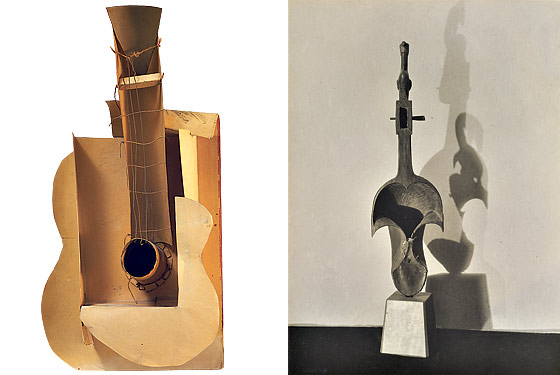
Vik Muniz is the latest artist to present a show in the Museum of Modern Art’s “Artist’s Choice” series. The idea is simple—a visiting curator gets to go wild, picking and choosing from one of the world’s great art collections—and Muniz’s show, called “Rebus,” tries to reflect his process of discovery. “We started with one piece, then searched the entire collection to find the next one, and so on.” At the heart of the exhibit are artworks that he’s paired, one reverberating into the next, to create “a residual effect.” (Muniz’s own art isn’t shown, but it tends toward reconceptions, like a Mona Lisa made of peanut butter and jelly, that depend on such echoes.) Straightforward on the surface, these diptychs have resonances beyond the obvious, and New York asked Muniz to talk about five of them.
1. Harmonics
Maquette for Guitar, Pablo Picasso (1912) and African Musical Instrument, Charles Sheeler (1917)
“Picasso loved African art,” says Muniz “There’s a structural connection between his cardboard sculpture of a deconstructed guitar and the print by Sheeler—which is a photo-realistic facsimile of an African instrument.” He adds that Picasso’s model, for a later sheet-metal sculpture, “was probably one of the first times in history that someone made a sculpture, an art object, about something common.” (That’s echoed by the next object in the show, which is Dieter Rams’s stereo turntable from the MoMA design collection: “A beautiful object on its own which has become a relic.”)
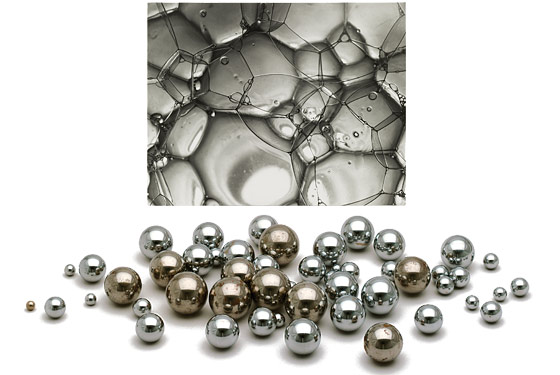
2. Industrial Beauty
Soap Bubbles, Berenice Abbott (1946) and Steel Balls, S.K.F. Industries, Inc. (circa 1934)
Some of the echo here is formal, based on the spherical shapes. But, Muniz says, the steel balls are “my favorite … I love ball bearings. When you put lots of them together, they are quite beautiful, almost magical.” Abbott, too, often looked for beauty in tough industrial objects, like the Manhattan Bridge, or simply unexpected ones. “I wanted this picture … from the start,” says Muniz. “I curated a show at the Met about science and art in photography, and I found her work completely staggering.”
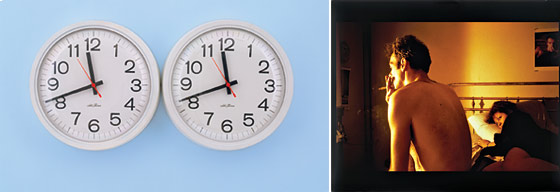
3. Love Stories
Untitled (Perfect Lovers), Felix Gonzalez-Torres (1991) and Nan and Brian In Bed, Nan Goldin (1983)
What puts Gonzalez-Torres’s clocks and Nan Goldin’s lovers together? “Sometimes the relationship between the pieces is almost purely semantic, as with the clocks and Goldin’s iconic print. But not totally. There is some irony in Felix’s installation”—after all, the clocks are kissing, and in sync, but they’re also pretty chilly figures. “And for me, the photograph is about the cold aftermath of love, not the synchronicity of love.”
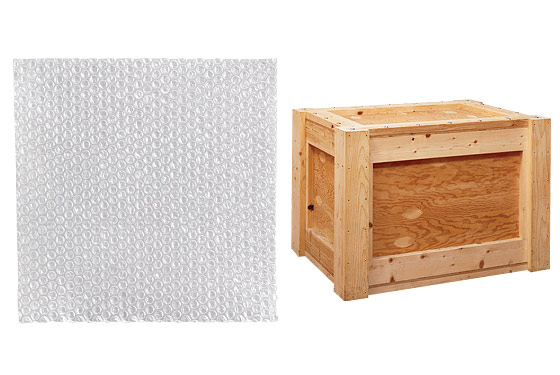
4. Behind the Scenes
Untitled, Richard Artschwager (1994) and Bubble Wrap, Marc A. Chavannes and Alfred W. Fielding (1960)
Yes, the pairing (of Artschwager’s sculptural echo of an art-handler’s crate with a plain old piece of packing material) is pretty jokey, but it couldn’t happen in any other museum. “The MoMA has in its collection a twelve-by-twelve-inch piece of bubble wrap from the sixties, by the people who actually designed bubble wrap. How incredible is that?”
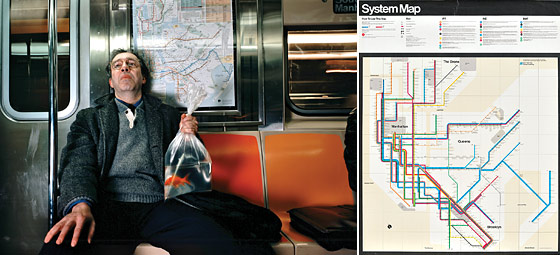
5. Subway Tales
New York Subway Map, Massimo Vignelli (1970) and Igor, Philip-Lorca diCorcia (1987)
Another only–in–New York–and–only–at–MoMA moment. Here, an MTA subway map (a generation newer than Vignelli’s design) is a secondary character in diCorcia’s opulent photograph, prompting the viewer to wonder about the goldfish-handler’s destination. “How could these two artworks ever be side-by-side in a traditional exhibition?” asks Muniz.
Through February 23.